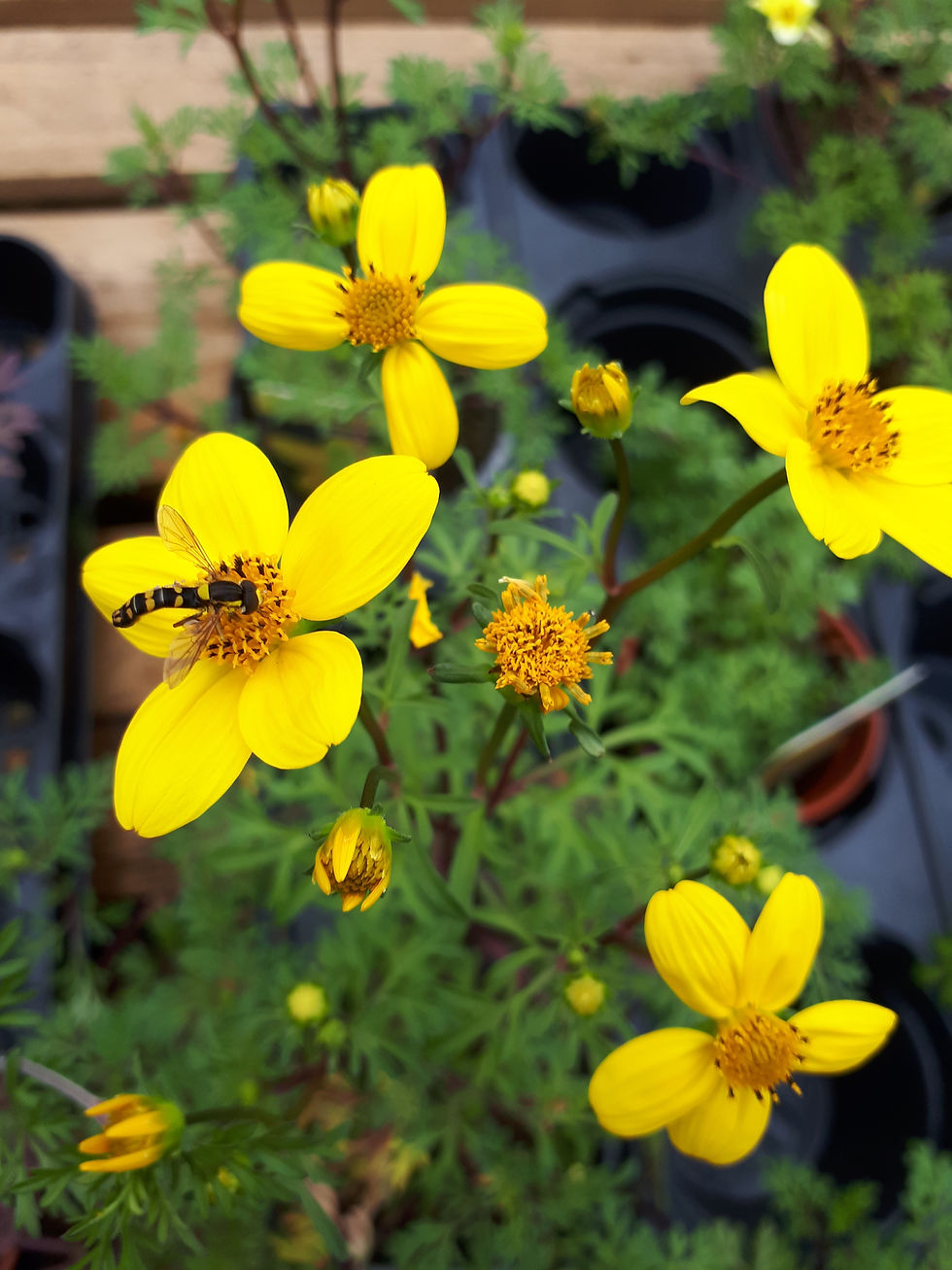Flaming June
- mahoney fisher
- Jun 20, 2024
- 3 min read
As we hurtle towards the longest day, on June 20th or 21st, depending on who you listen to, the summer seems yet to materialise. Flaming June is a bit of a wash out so far, with more rain on the horizon. Traditionally celebrated as mid summer, it is a period of productive growth with plants taking advantage of the long day length to mazimise the time they can photosynthesise.
In warm, dry years growth can be arrested by periods of drought, or by sun damage. This year, the warm wet weather has meant that vegetation is extremely lush. Hedges and lawns have needed extra attention, and it promises to be a bumper year for fruit.
One downside of the damp is the proliferation of slugs and snails. They are forced to hide from the sun in dryer years, being active mostly at night, which can slow sown their growth and reproduction rates. This year, with the days being wet and humid, they are everywhere, eating everything. Even plants that don't normally attract them, like tomatoes, are being devoured at the moment.

There is only so much you can do to protect your plants from this onslaught, especially if you want to garden organically to safeguard wildlife. Barrier methods can be effective to try to keep the pests away from individual plants while they get established. There are some great products on the market that discourage slugs from crossing them, such as recycled wool pellets or copper tape. Starting seeds off inside and planting out healthy, strong seedlings can help too, by giving the plants a fighting chance to get established.
Nematodes can be bought online, to be mixed with water and sprinkled onto the soil if you want to reduce the overall slug population in your garden. The nematodes are a natural parasite of slugs, killing their host. This kind of biological control takes time to get going, but can be very effective in the long run. It only works for slugs though, so if snails are a problem you might want to look at attracting lager predators like thrush to your garden.
Slugs and snails have lots of natural predators, and welcoming those into the garden can help to keep pest numbers down. Hedges provide good cover for hedgehogs and birds such as blackbirds and thrushes that eat slugs. Making a wildlife pond to attract frogs is a nice idea too, it gives you extra plant growing options in the form of pond and bog garden plants.
I like to take garden design ideas from nature, and there is an abundance of inspiration in our fields and hedgerows at the moment. My current favourite is this stunning combination of dog daisy and yellow wild flower (most likely one of the hawkweed family).

A combination like this would be stunning in pots, and could be achieved using plants like marguerite (ox eye daisy), white daisy which would pair well with bidens (see photo below) .

In an herbaceous border, the lemon yellow daisy with an orange center and delicate feathery foliage, Anthemis tinctoria ' E.C. Buxton' is a stunning plant. Gypsophila (baby's breath) is a white flowering perennial that produces clouds of flowers.
I know yellow isn't for everyone, so how about pairing Gypsophila 'Rosenscheier' , a slightly later flowering pale pink variety that blooms from July to August, with Echinacea (cone flower), a bee friendly perennial that flowers from midsummer until autumn. There are some beautiful purple varieties like Echinacea purpurea 'Elton Knight' the would look stunning with the more delicate gypsophila.
One advantage of growing perennials is they tend to be more resistant to slug damage once established than annuals. Naturalistic planting schemes, where plants are grown together in drifts, helps the plants to survive extremes of environmental conditions better. They give each other support and shade one another's roots. Ensuring garden soil is covered helps to protect it, reducing the effects of both drought and flood in soil erosion and depletion. It also gives safe spaces for wildlife, increasing the garden's biodiversity, including the presence of natural predators of some of our garden pests.
Designing and planting gardens like this, with climate change in mind, is a really good way of ensuring your outdoor space looks good whatever the weather, so when the sun finally does come out this summer, you can get out there and enjoy it.


Comments